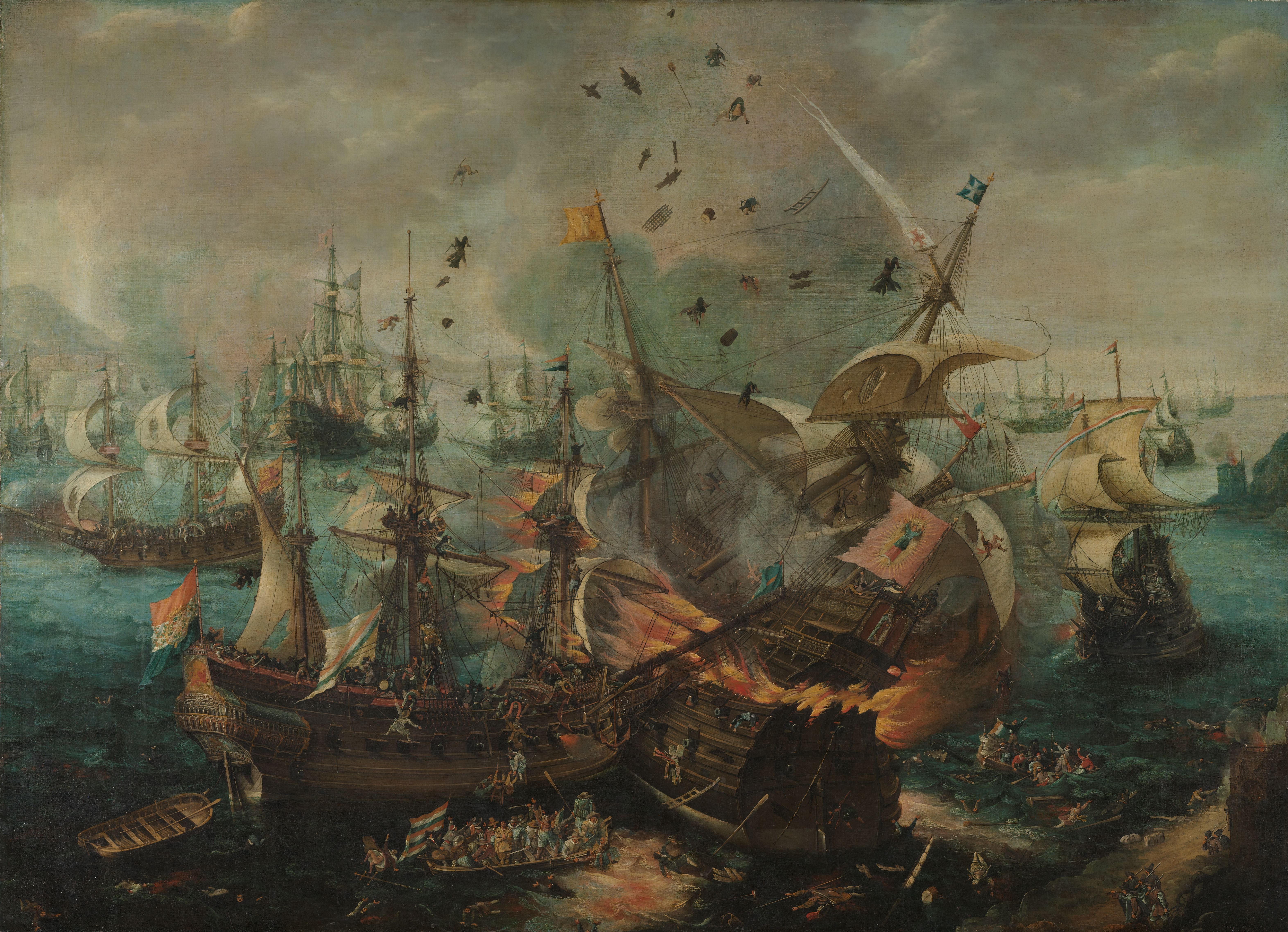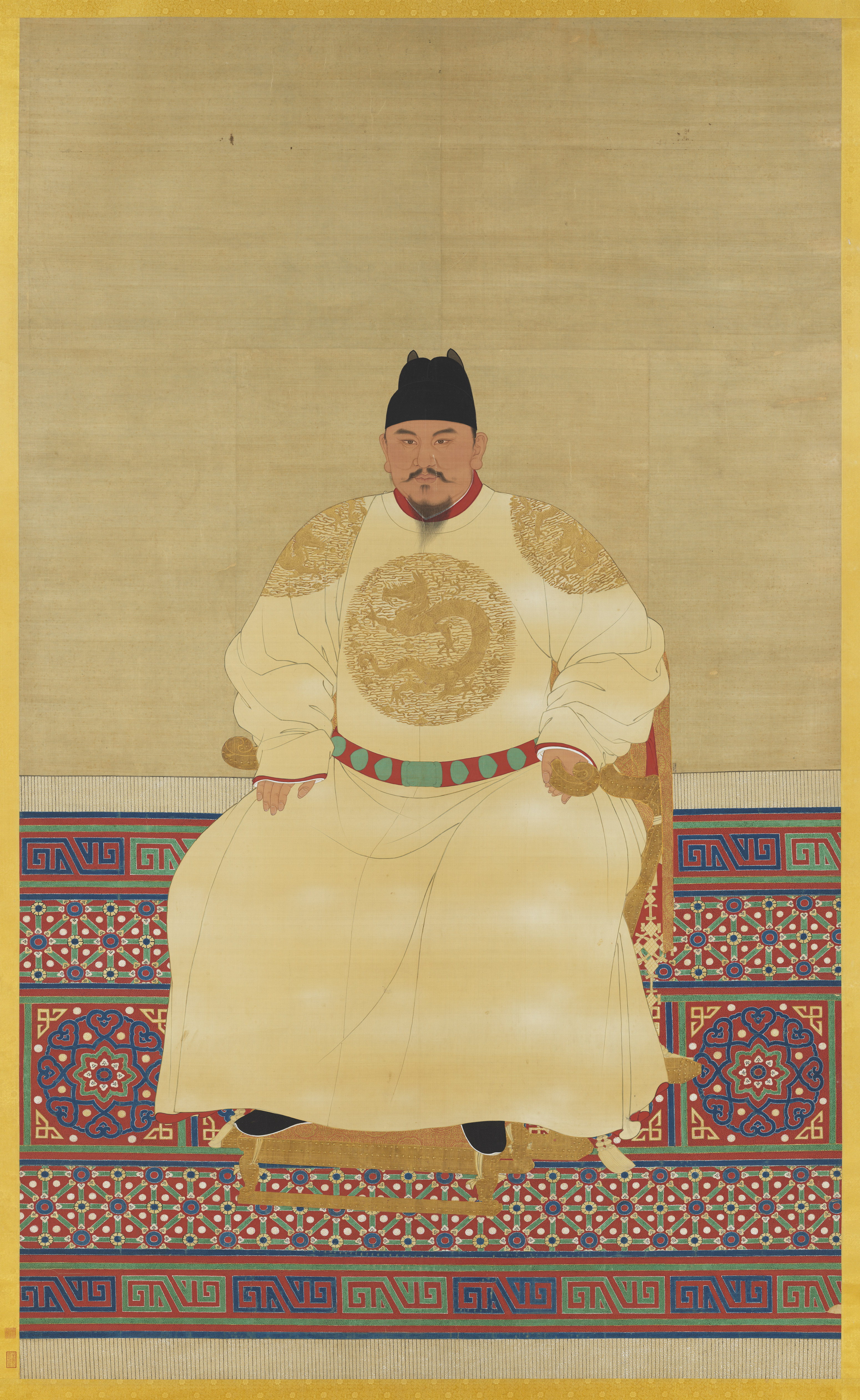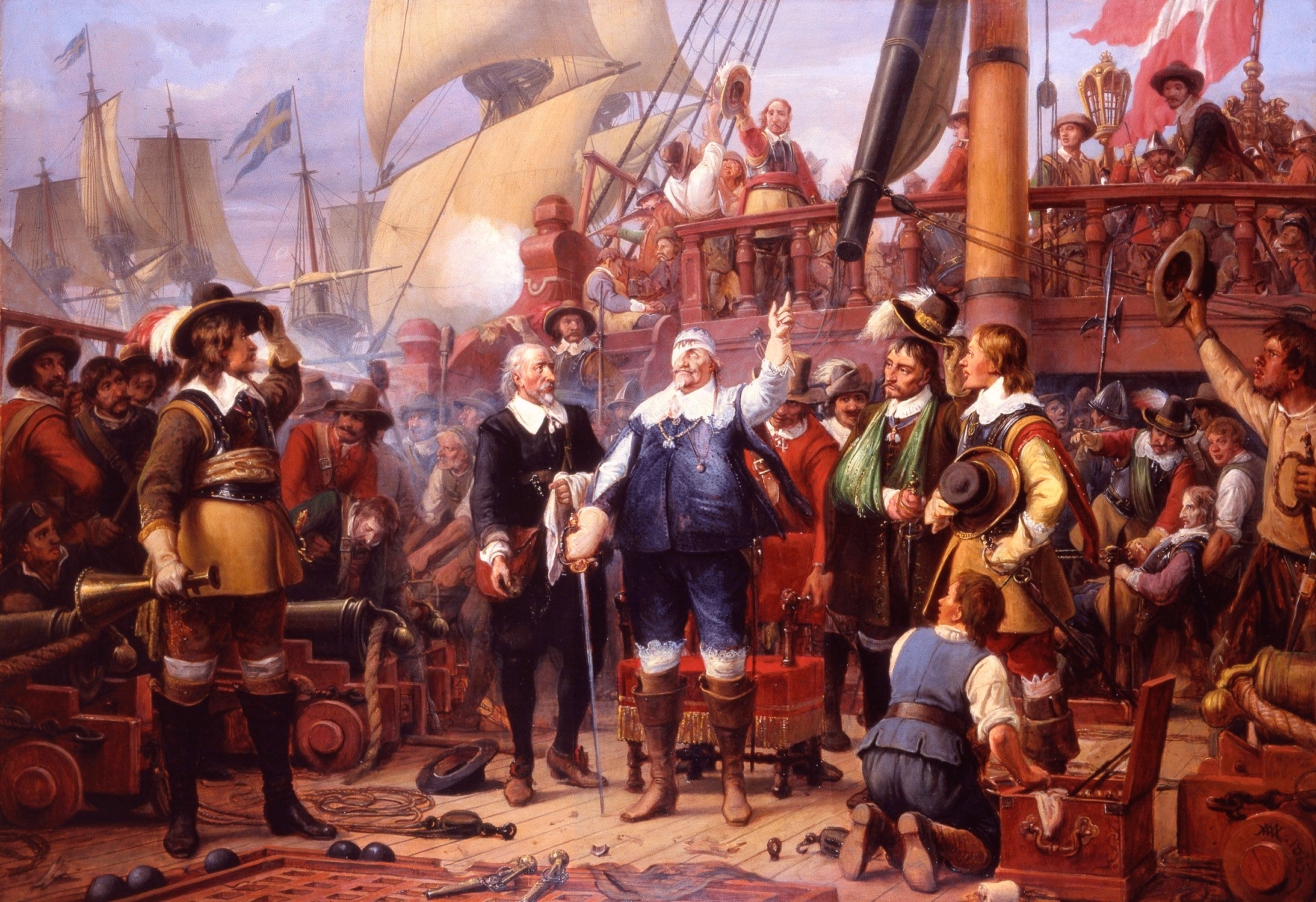|
April 25
Events Pre-1600 *404 BC – Admiral Lysander and King Pausanias of Sparta blockade Athens and bring the Peloponnesian War to a successful conclusion. * 775 – The Battle of Bagrevand puts an end to an Armenian rebellion against the Abbasid Caliphate. Muslim control over the South Caucasus is solidified and its Islamization begins, while several major Armenian ''nakharar'' families lose power and their remnants flee to the Byzantine Empire. * 799 – After mistreatment and disfigurement by the citizens of Rome, Pope Leo III flees to the Frankish court of king Charlemagne at Paderborn for protection. *1134 – The name Zagreb was mentioned for the first time in the Felician Charter relating to the establishment of the Zagreb Bishopric around 1094. 1601–1900 * 1607 – Eighty Years' War: The Dutch fleet destroys the anchored Spanish fleet at Gibraltar. *1644 – Transition from Ming to Qing: The Chongzhen Emperor, the last Emperor of Ming China, ... [...More Info...] [...Related Items...] OR: [Wikipedia] [Google] [Baidu] |
404 BC
__NOTOC__ Year 404 BC was a year of the pre-Julian Roman calendar. At the time, it was known as the Year of the Tribunate of Volusus, Cossus, Fidenas, Ambustus, Maluginensis and Rutilus (or, less frequently, year 350 ''Ab urbe condita''). The denomination 404 BC for this year has been used since the early medieval period, when the Anno Domini calendar era became the prevalent method in Europe for naming years. Events By place Greece * The Athenian leader Cleophon continues to urge resistance against the Peloponnesians, but the situation becomes desperate and he is arrested, condemned to death and executed. * April 25 – Athens, full of refugees and weakened by plague and hunger, capitulates and the Peloponnesian War ends. * Theramenes secures terms that save the city of Athens from destruction. The Spartans allow Athens to retain its independence. However, Athens loses all its foreign possessions and what is left of its fleet and is required to become an ally of S ... [...More Info...] [...Related Items...] OR: [Wikipedia] [Google] [Baidu] |
1607
Events January–June * January 13 – The Bank of Genoa fails, after the announcement of national bankruptcy in Spain. * January 19 – San Agustin Church, Manila, is officially completed; by the 21st century it will be the oldest church in the Philippines. * January 30 – A massive wave sweeps along the Bristol Channel, possibly a tsunami, killing 2,000 people. * February 24 – Claudio Monteverdi's ''L'Orfeo'', the earliest fully developed opera in the modern-day repertoire, premieres at the Ducal Palace of Mantua. * March 10 – Battle of Gol in Gojjam: Susenyos defeats the combined armies of Yaqob and Abuna Petros II, which makes him Emperor of Ethiopia. * April 25 – Battle of Gibraltar: A Dutch fleet destroys a Spanish fleet anchored in the Bay of Gibraltar. * April 26 – English colonists make landfall at Cape Henry, Virginia, later moving up the James River. * May 14 – Jamestown, Virginia, is established as the first p ... [...More Info...] [...Related Items...] OR: [Wikipedia] [Google] [Baidu] |
Highwayman
A highwayman was a robber who stole from travellers. This type of thief usually travelled and robbed by horse as compared to a footpad who travelled and robbed on foot; mounted highwaymen were widely considered to be socially superior to footpads. Such criminals operated until the mid or late 19th century. Highwaywomen, such as Katherine Ferrers, were said to also exist, often dressing as men, especially in fiction. The first attestation of the word ''highwayman'' is from 1617. Euphemisms such as "knights of the road" and "gentlemen of the road" were sometimes used by people interested in romanticizing (with a Robin Hood–esque slant) what was often an especially violent form of stealing. In the 19th-century American West, highwaymen were sometimes known as ''road agents''. In Australia, they were known as bushrangers. Robbing The great age of highwaymen was the period from the Restoration in 1660 to the death of Queen Anne in 1714. Some of them are known to have b ... [...More Info...] [...Related Items...] OR: [Wikipedia] [Google] [Baidu] |
1792
Events January–March * January 9 – The Treaty of Jassy ends the Russian Empire's war with the Ottoman Empire over Crimea. * February 18 – Thomas Holcroft produces the comedy '' The Road to Ruin'' in London. * February 20 ** The Postal Service Act, establishing the United States Post Office Department, is signed by President George Washington.''Harper's Encyclopaedia of United States History from 458 A. D. to 1909'', ed. by Benson John Lossing and, Woodrow Wilson (Harper & Brothers, 1910) p169 ** Parliament House, Dublin catches fire during a legislative session. "Although in imminent danger of the roof falling in," it is noted later, "the House did not adjourn until a proper motion had been put and carried in the affirmative.""Fires, Great", in ''The Insurance Cyclopeadia: Being an Historical Treasury of Events and Circumstances Connected with the Origin and Progress of Insurance'', Cornelius Walford, ed. (C. and E. Layton, 1876) pp62. * March 1 &nd ... [...More Info...] [...Related Items...] OR: [Wikipedia] [Google] [Baidu] |
War Of The Spanish Succession
The War of the Spanish Succession was a European great power conflict that took place from 1701 to 1714. The death of childless Charles II of Spain in November 1700 led to a struggle for control of the Spanish Empire between his heirs, Philip V of Spain, Philip of Anjou and Charles VI, Holy Roman Emperor, Charles of Austria, and their respective supporters, among them Spanish Empire, Spain, Habsburg monarchy, Austria, Kingdom of France, France, the Dutch Republic, Savoyard state, Savoy and Kingdom of Great Britain, Great Britain. Related conflicts include the 1700–1721 Great Northern War, Rákóczi's War of Independence in Kingdom of Hungary (1526–1867), Hungary, the Camisards revolt in southern France, Queen Anne's War in North America and minor trade wars in colonial India, India and New Spain, South America. Although weakened by over a century of continuous conflict, Spain remained a global power whose territories included the Spanish Netherlands, large parts of Italy, ... [...More Info...] [...Related Items...] OR: [Wikipedia] [Google] [Baidu] |
Battle Of Almansa
The Battle of Almansa took place on 25 April 1707, during the War of the Spanish Succession. It was fought between an army loyal to Philip V of Spain, Bourbon claimant to the Spanish throne, and one supporting his Habsburg rival, Archduke Charles of Austria. The result was a decisive Bourbon victory that reclaimed most of eastern Spain for Philip. The Bourbon army was commanded by the Duke of Berwick, illegitimate son of James II of England, while Habsburg forces were led by Henri de Massue, Earl of Galway, an exiled French Huguenot. This makes it "probably the only battle in history in which the English forces were commanded by a Frenchman, the French by an Englishman." Background Campaigning in Spain and size of the armies involved were limited by logistics to a greater extent than Flanders or Italy. Reliance on local sources for forage and other supplies limited operations in arid areas like Northern Spain, while until the advent of railways in the 19th century, goods and s ... [...More Info...] [...Related Items...] OR: [Wikipedia] [Google] [Baidu] |
1707
In the Swedish calendar it was a common year starting on Tuesday, one day ahead of the Julian and ten days behind the Gregorian calendar. Events January–March * January 1 – John V is crowned King of Portugal and the Algarves in Lisbon. * January 16 – The Treaty (or Act) of Union, of the two Kingdoms of Scotland and England, is ratified by the Parliament of Scotland by a vote of 110 to 68. * February 4 – Eighteen months after losing the Battle of Warsaw while leading a cavalry charge for Saxony against the army of Sweden during the Great Northern War, General Otto von Paykull of Swedish Livonia is beheaded outside of Stockholm following his conviction for treason. * February 15 – As part of the process of the unification of Scotland and England as Great Britain, Scotland selects 16 members to sit in the House of Lords at the Palace of Westminster. * March 3 – Emperor Aurangzeb dies in Ahmednagar, Aurangabad. * March 19 &n ... [...More Info...] [...Related Items...] OR: [Wikipedia] [Google] [Baidu] |
Li Zicheng
Li Zicheng (22 September 1606 – 1645), born Li Hongji, also known by the nickname, Dashing King, was a Chinese peasant rebel leader who overthrew the Ming dynasty in 1644 and ruled over northern China briefly as the emperor of the short-lived Shun dynasty before his death a year later. Biography Li Zicheng was born in 1606 as Li Hongji to an impoverished family of farmers in Li Jiqian village, Yan'an prefecture, northeast Shaanxi province. Li Zicheng had a brother who was 20 years his senior and raised Li Zicheng alongside his son and Zicheng’s nephew, Li Guo. While Li Zicheng was literate, the source of his education is disputed. Over the course of his late adolescence and early adulthood, Li worked on a farm, in a wine shop, in a blacksmith's shop, and as a mailman for the state courier system. According to folklore, in 1630, Li was put on public display in an iron collar and shackles for failing to repay loans to a usurious magistrate. The magistrate, a man by the nam ... [...More Info...] [...Related Items...] OR: [Wikipedia] [Google] [Baidu] |
Ming Dynasty
The Ming dynasty (), officially the Great Ming, was an Dynasties in Chinese history, imperial dynasty of China, ruling from 1368 to 1644 following the collapse of the Mongol Empire, Mongol-led Yuan dynasty. The Ming dynasty was the last orthodox dynasty of China ruled by the Han Chinese, Han people, the majority ethnic group in China. Although the primary capital of Beijing fell in 1644 to a rebellion led by Li Zicheng (who established the short-lived Shun dynasty), numerous rump state, rump regimes ruled by remnants of the House of Zhu, Ming imperial family—collectively called the Southern Ming—survived until 1662. The Ming dynasty's founder, the Hongwu Emperor (r. 1368–1398), attempted to create a society of self-sufficient rural communities ordered in a rigid, immobile system that would guarantee and support a permanent class of soldiers for his dynasty: the empire's standing army exceeded one million troops and the naval history of China, navy's dockyards in Nanjin ... [...More Info...] [...Related Items...] OR: [Wikipedia] [Google] [Baidu] |
Chongzhen Emperor
The Chongzhen Emperor (; 6 February 1611 – 25 April 1644), personal name Zhu Youjian (), courtesy name Deyue (),Wang Yuan (王源),''Ju ye tang wen ji'' (《居業堂文集》), vol. 19. "聞之張景蔚親見烈皇帝神主題御諱字德約,行五,生於萬曆庚戌十二月二十四日寅時,崩於崇禎甲申三月十九日丑時。" was the 17th and last Emperor of the Ming dynasty. He reigned from 1627 to 1644. " Chongzhen," the era name of his reign, means "honorable and auspicious." Zhu Youjian was son of the Taichang Emperor and younger brother of the Tianqi Emperor, whom he succeeded to the throne in 1627. He battled peasant rebellions and was not able to defend the northern frontier against the Manchu. When rebels under Li Zicheng reached the capital Beijing in 1644, he committed suicide, ending the Ming dynasty. The Manchu formed the succeeding Qing dynasty. In 1645, Zhu Yousong, who had proclaimed himself the Hongguang Emperor of the Southern Ming, g ... [...More Info...] [...Related Items...] OR: [Wikipedia] [Google] [Baidu] |
Transition From Ming To Qing
The transition from Ming to Qing, alternatively known as Ming–Qing transition or the Manchu conquest of China, from 1618 to 1683, saw the transition between two major dynasties in Chinese history. It was a decades-long conflict between the emerging Qing dynasty, the incumbent Ming dynasty, and several smaller factions (like the Shun dynasty and Xi dynasty). It ended with the consolidation of Qing rule, and the fall of the Ming and several other factions. Overview The transition from the Ming to Qing was a decades-long period of conflict between: # the Qing dynasty, established by the Manchu clan Aisin Gioro in contemporary Northeast China; # the Ming dynasty, the incumbent dynasty led by the Zhu clan; # and various other rebel powers in China, such as the short-lived Xi dynasty led by Zhang Xianzhong and the short-lived Shun dynasty led by Li Zicheng. Leading up to the Qing, in 1618, the Later Jin khan Nurhaci commissioned a document entitled the Seven Griev ... [...More Info...] [...Related Items...] OR: [Wikipedia] [Google] [Baidu] |
1644
It is one of eight years (CE) to contain each Roman numeral once (1000(M)+500(D)+100(C)+(-10(X)+50(L))+(-1(I)+5(V)) = 1644). Events January–March * January 22 – The Royalist Oxford Parliament is first assembled by King Charles I of England. * January 26 – First English Civil War – Battle of Nantwich: The Parliamentarians defeat the Royalists, allowing them to end the 6-week Siege of Nantwich in Cheshire, England. * January 30 – **Dutch explorer Abel Tasman departs from Batavia in the Dutch East Indies (now Jakarta in Indonesia) on his second major expedition for the Dutch East India Company, to maps the north coast of Australia. Tasman commands three ships, ''Limmen'', ''Zeemeeuw'' and ''Braek'', and returns to Batavia on August 4 with no major finds. ** Battle of Ochmatów: Polish–Lithuanian Commonwealth forces under hetman Stanisław Koniecpolski secure a substantial victory over the horde of Crimean Tatars, under Tugay ... [...More Info...] [...Related Items...] OR: [Wikipedia] [Google] [Baidu] |








.jpg)
